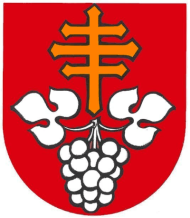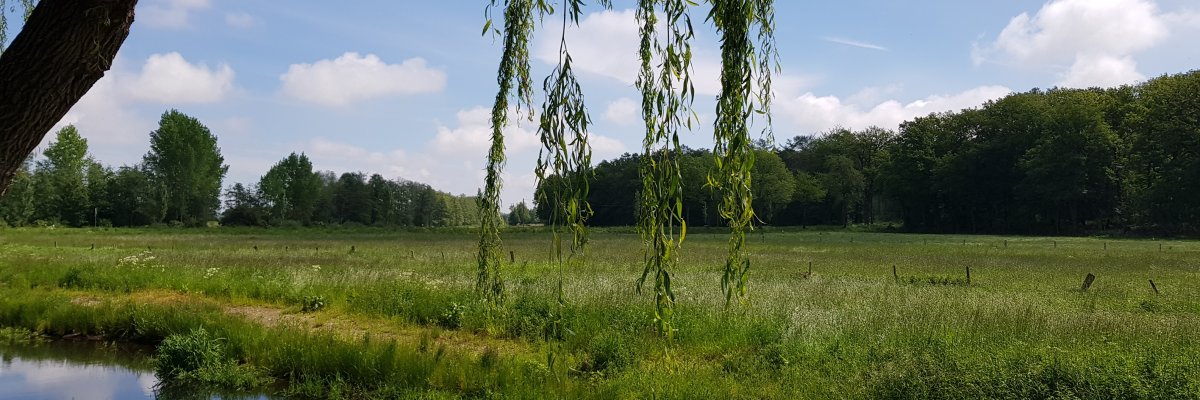Winnekendonk
With 4,591 inhabitants (as of 31.12.2023), the village of Winnkendonk is the largest district of the pilgrimage town of Kevelaer in terms of population. The Issumer Fleuth flows through the village, where it joins the Niers. The surrounding area is mainly characterized by agricultural farmland. The 2,485-hectare district of Winnekendonk also includes the district of Schravelen, which is located near the Niers, as well as the Achterhoek farming communities.
Coat of arms

The Winnekendonk coat of arms refers to the patron saint of the municipality, St. Urbanus. The triple papal cross and the silver wine umbel are in enigmatic but convincing harmony with each other.
History
Winnekendonk and the court of Winnekendonk were first mentioned in a document when the knight Wilhelm von Kervenheim sold the bailiwick over Winnekendonk to the chapter of the monastery in Xanten on September 27, 1282. Winnekendonk had already belonged to the county of Cleve before 1250 (since 1417 the Duchy of Cleve). From 1439, the court of Winnekendonk and the court of Kervenheim formed the Schravelen magistracy. The name Schravelen comes from the official residence of the judges, who resided at Haus Schravelen, a castle on the Niers that has now disappeared.
The parish church of St. Urbanus in Winnekendonk was built in the Middle Ages, but unfortunately the date of construction cannot be verified. Until the middle of the 15th century, the chapel in Kervenheim and Kervendonk also belonged to the parish of Winnekendonk.
In 1448, horsemen from Cologne invaded the Duchy of Cleves and destroyed Winnekendonk. In the last third of the 15th century, there were around 550 devout Catholics. Around 1630 there were 59 farms, 34 cathedrals and 24 houses in Winnekendonk, inhabited by 810 people.
At the end of the 17th century during the reign of Louis XIV, the parish church of St. Urbanus and several houses in the village of Winnekendonk were set on fire twice (1689 and 1693) due to non-payment of high war contributions to the French. The old Schravelen magistrate's office was dissolved in 1798 and Kervenheim and Winnekendonk were united to form a mayoralty, with the mayor's seat in Kervenheim.
In 1816, Winnekendonk was assigned to the newly established district of Geldern and the mayoralty of Kervenheim. In 1853, the administrative seat of the mayor's office of Kervenheim with the municipalities of Kervenheim, Kervendonk and Winnekendonk was moved from Kervenheim to the vacated school building in front of the church tower - today known as the "Old Town Hall" - in Winnekendonk. In the middle of the 19th century, there were 244 houses in Winnekendonk. Three quarters of the tradesmen worked in agriculture and a quarter were craftsmen.
In the 60s of the 19th century, the houses, farms and Katstellen formerly belonging to Kervendonk, which were located on the municipal border with Winnekendonk and Kevelaer, were separated off and assigned to Winnekendonk, including the Schravelsche watermill. In addition to the Schravelsche watermill, the Kerssenboomsche and Singendonksche windmills still exist today. The mills are all no longer in operation.
In 1887 and 1888, the parish church of St. Urbanus was built to its current size. 85% of Winnekendonk was destroyed in the Second World War. The municipality of Winnekendonk, which had been independent since the founding of the district of Geldern and belonged to the Kervenheim office, was incorporated into the town of Kevelaer in 1969. Winnekendonk won a bronze medal in the state competition "Our village should become more beautiful", now renamed "Our village has a future", in 1969 and silver medals in 1971, 1973, 1983 and 1985. In 1975, the village was awarded a gold medal at state level and a silver medal at national level. After winning another gold medal at state level in 2000, the village was then awarded a gold medal at national level in 2001.

